Thermaltake Toughpower Grand RGB 750W PSU Review
RGB LED lighting is the new hotness, and a lot of power supplies are incorporating it. Thermaltake's Toughpower Grand RGB with 750W of maximum power boasts RGB lighting, surprisingly good performance, and modular cabling.
Why you can trust Tom's Hardware
Ripple Measurements
To learn how we measure ripple, please click here.
The following table includes ripple levels we measured on the TPG-0750F-R's rails. The limits, according to the ATX specification, are 120mV (+12V) and 50mV (5V, 3.3V and 5VSB).
| Test | 12V | 5V | 3.3V | 5VSB | Pass/Fail |
|---|---|---|---|---|---|
| 10% Load | 5.3mV | 4.8mV | 4.5mV | 4.2mV | Pass |
| 20% Load | 6.2mV | 5.3mV | 4.7mV | 4.5mV | Pass |
| 30% Load | 7.7mV | 5.5mV | 5.5mV | 4.2mV | Pass |
| 40% Load | 9.5mV | 8.6mV | 6.3mV | 6.5mV | Pass |
| 50% Load | 11.0mV | 9.5mV | 6.9mV | 7.9mV | Pass |
| 60% Load | 12.9mV | 11.9mV | 6.1mV | 8.9mV | Pass |
| 70% Load | 14.6mV | 11.1mV | 6.8mV | 8.4mV | Pass |
| 80% Load | 15.5mV | 11.4mV | 7.8mV | 8.5mV | Pass |
| 90% Load | 17.1mV | 12.2mV | 7.3mV | 7.5mV | Pass |
| 100% Load | 22.2mV | 13.8mV | 7.8mV | 8.4mV | Pass |
| 110% Load | 26.9mV | 14.0mV | 9.3mV | 10.1mV | Pass |
| Cross-Load 1 | 6.6mV | 6.3mV | 6.1mV | 4.9mV | Pass |
| Cross-Load 2 | 21.9mV | 10.6mV | 7.4mV | 6.4mV | Pass |
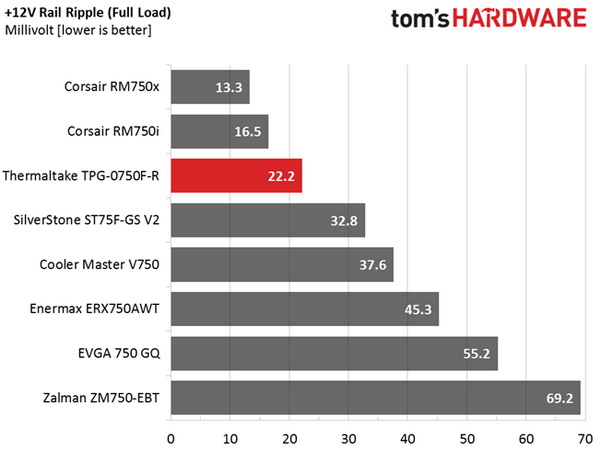
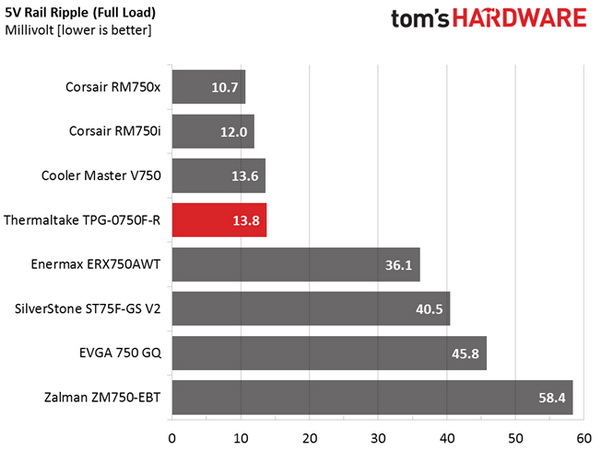
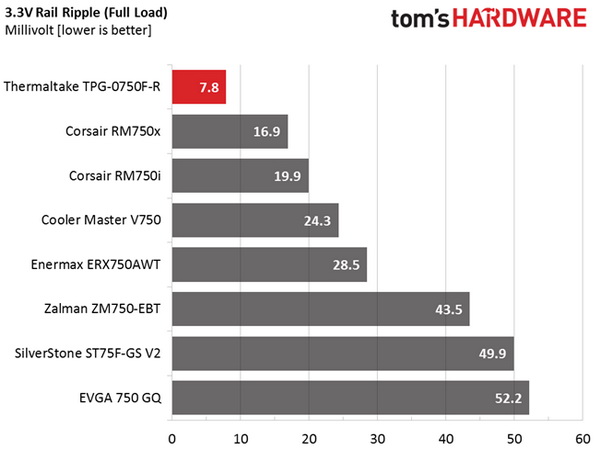
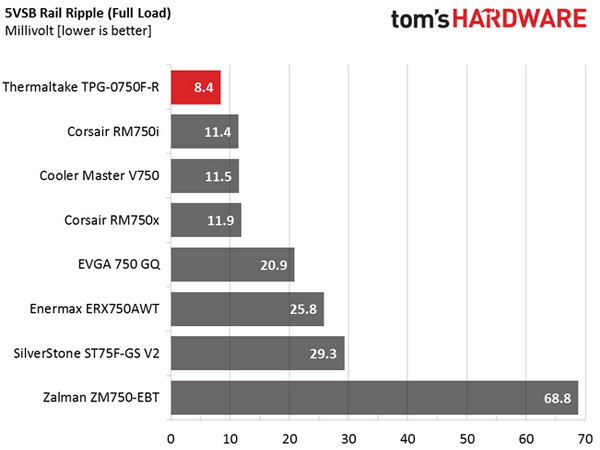
Thermaltake keeps its promise: ripple suppression is very good on all rails. The TPG-0750F-R performs much better than other PSUs based on the same platform, especially when it comes to ripple filtering on the minor rails. Obviously TT's unit has some modifications/fixes on its voltage regulation modules.
Ripple Oscilloscope Screenshots
The following oscilloscope screenshots illustrate the AC ripple and noise registered on the main rails (+12V, 5V, 3.3V and 5VSB). The bigger the fluctuations on the screen, the bigger the ripple/noise. We set 0.01 V/Div (each vertical division/box equals 0.01V) as the standard for all measurements.
Ripple At Full Load

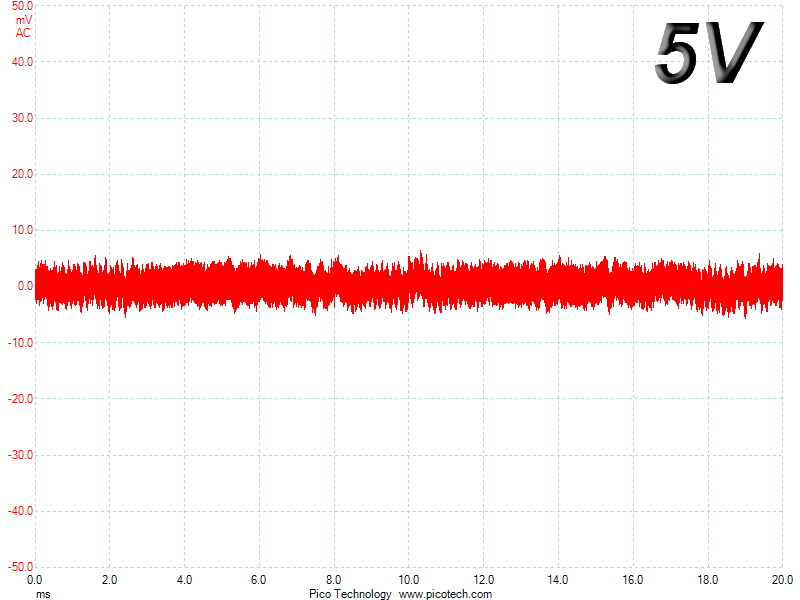
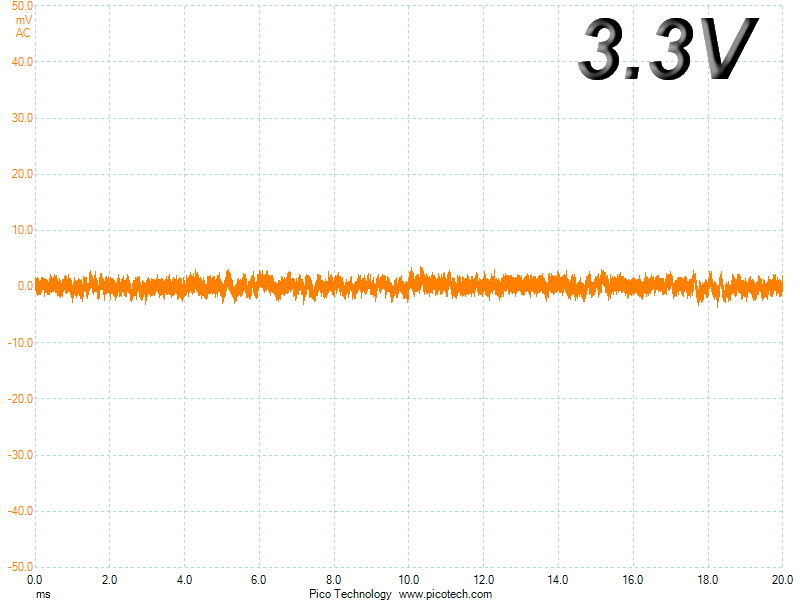
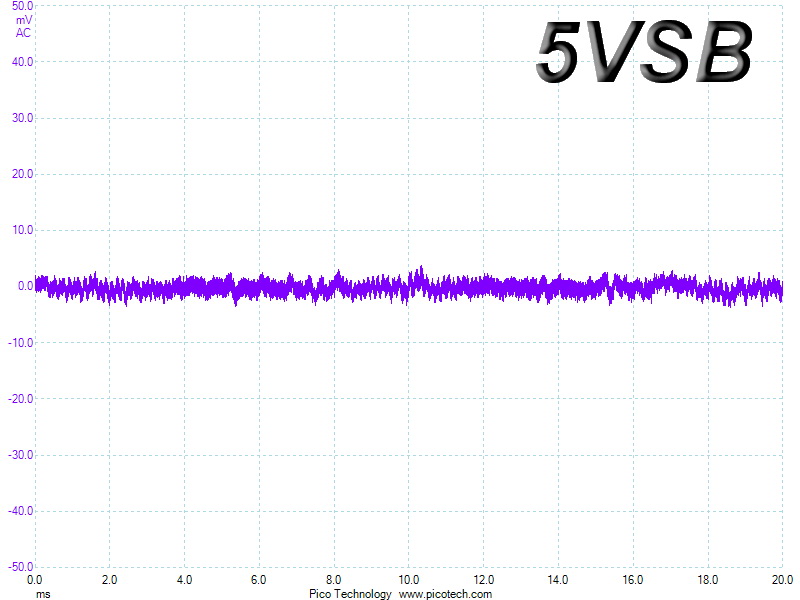
Ripple At 110-Percent Load
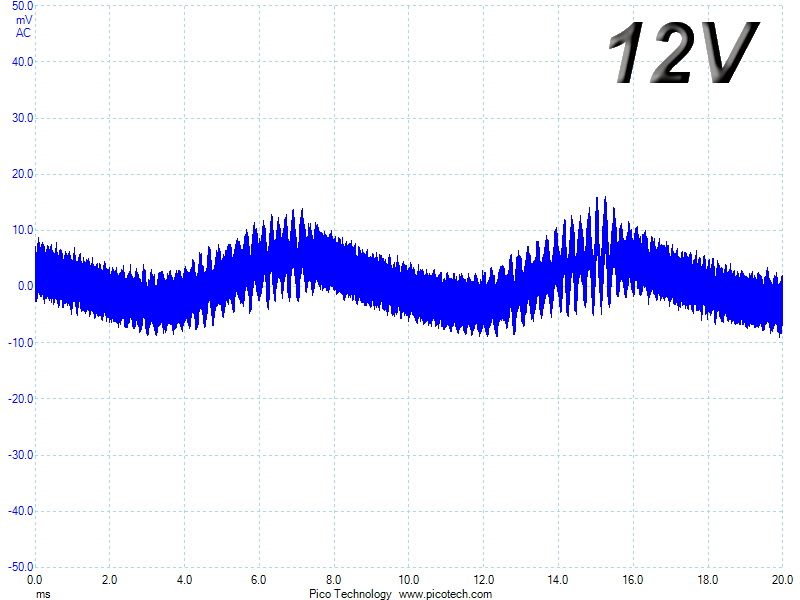
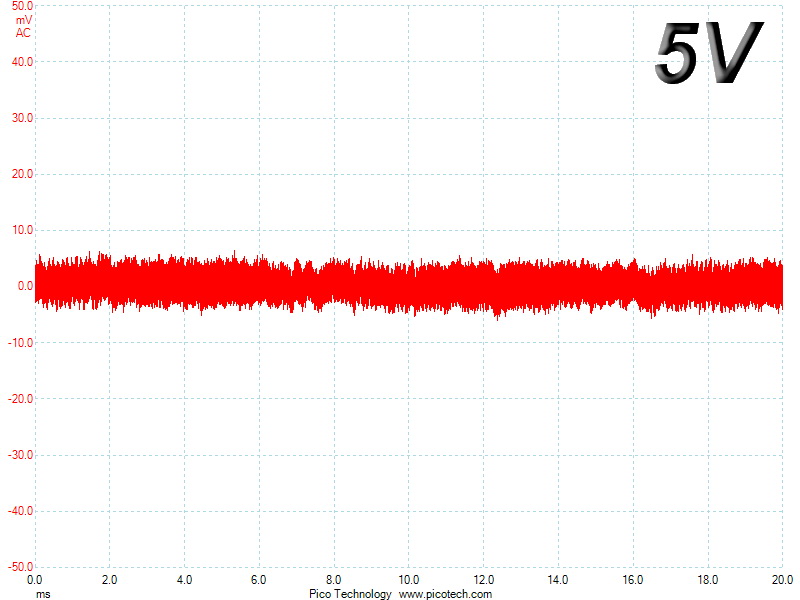
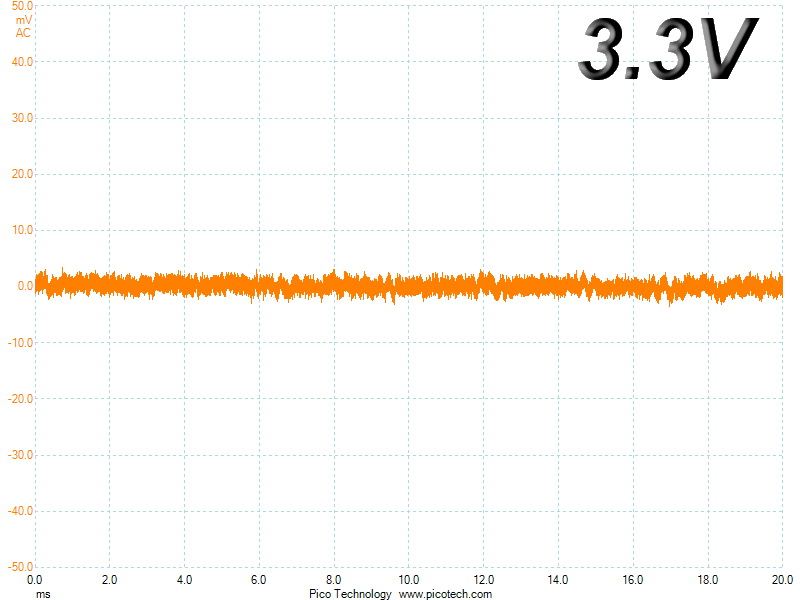
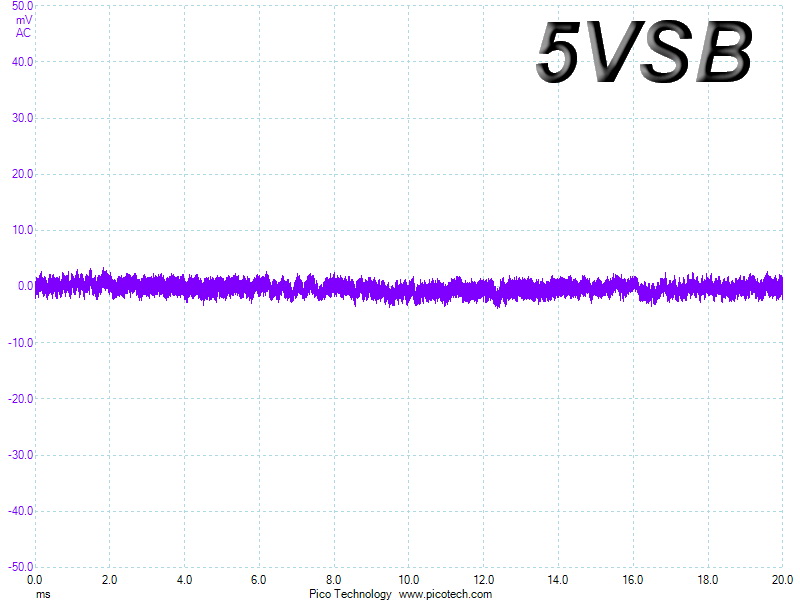
Ripple At Cross-Load 1
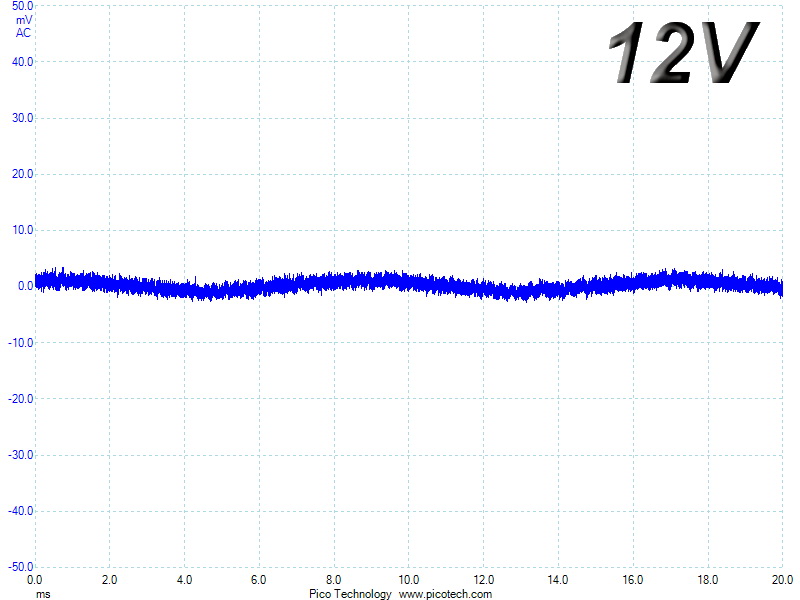

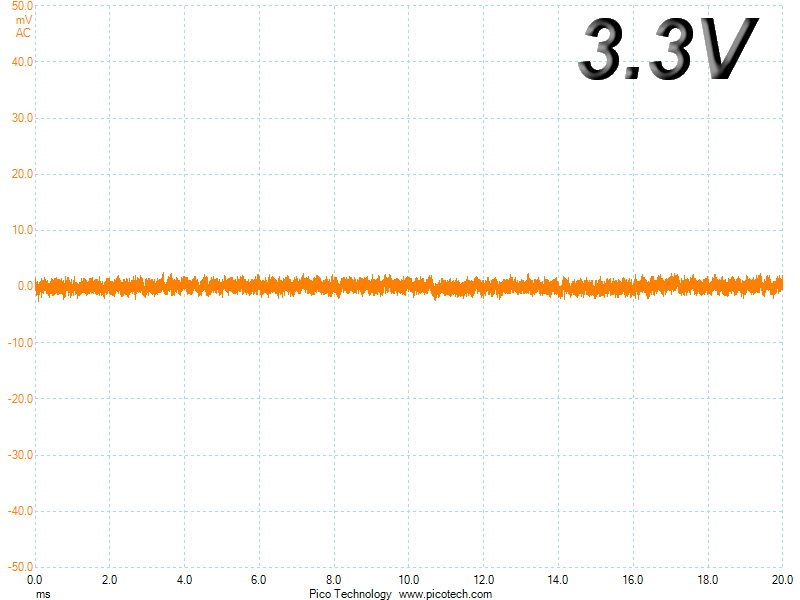
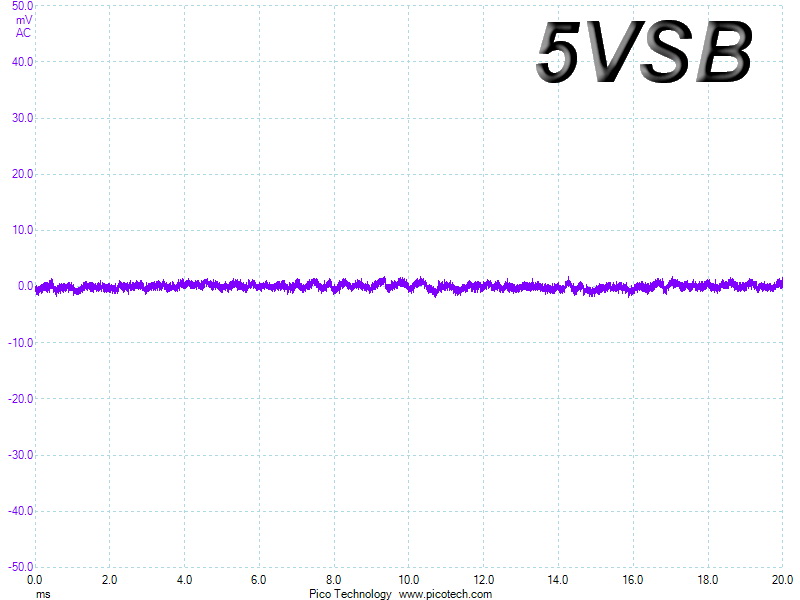
Ripple At Cross-Load 2

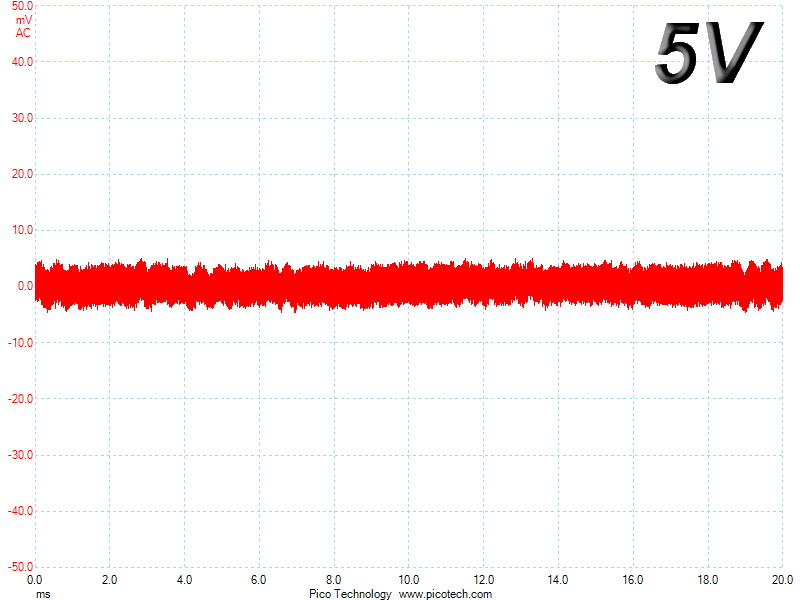
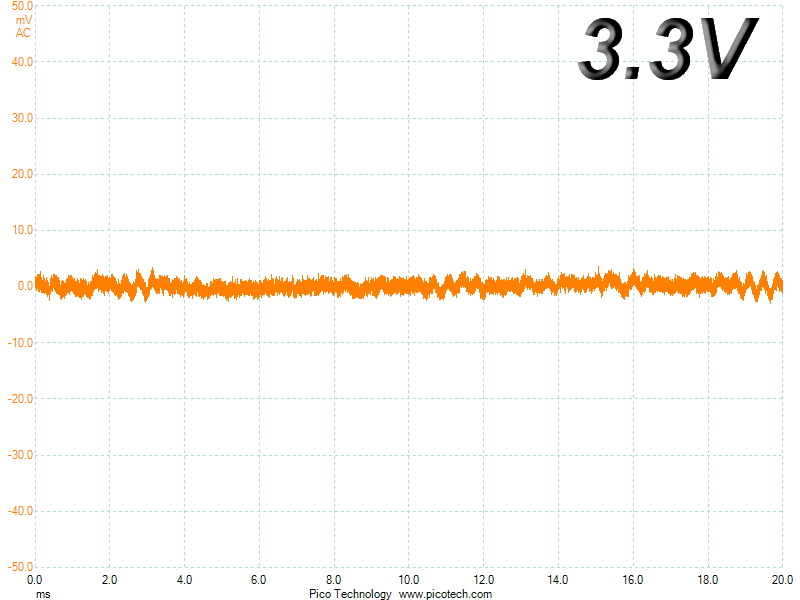
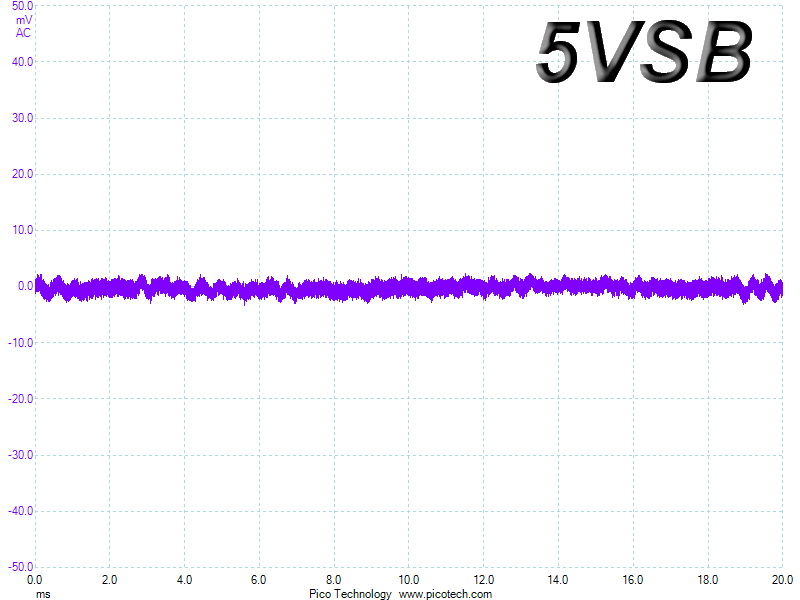
Get Tom's Hardware's best news and in-depth reviews, straight to your inbox.
Current page: Ripple Measurements
Prev Page Transient Response Tests Next Page Performance, Performance Per Dollar, Noise, And Efficiency Ratings
Aris Mpitziopoulos is a contributing editor at Tom's Hardware, covering PSUs.
-
shrapnel_indie Has anyone tested this claim of a cooler PC with the PSU fan facing up into the case instead of down and drawing air from outside?Reply
Edit: I see with at least this unit, it was found to be so, What about other units? -
Phillip Wager I have my computer case in a dusty area of my house and on the floor. i flipped my psu fan to face inside the case because i was sick of having to clean the dust filter every week or so. I'm paranoid about psu dust death. I have PLENTY of case fans(5) so i'm not worried about the psu overheating in this configuration.Reply -
Malik 722 but mounting power supply fan side up won't suck in hot air from the chassis and increase the power supply temperature.Reply -
Virtual_Singularity Reply19328496 said:I want it, for my Asus
Cool
Na, you really don't, you can do better methinks. -
blackmagnum "It's common knowledge that hot air rises, so if we want to improve airflow inside a chassis, we have to help move hot air up and out with fans installed on the top or back. We'll have to revisit this topic in a story about PSU orientation and its effect on case cooling."Reply
-I'll be looking forward to the article. -
SeoulFood I just won this PSU at a LAN this past weekend. I would use it, but I won a Silverstone 850w at the last LAN. Craigslist here we come.Reply